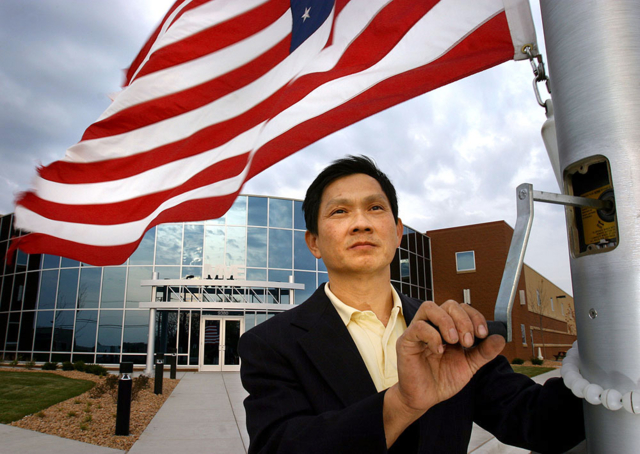Refugees
Lack of support at home and lack of progress in the war eventually led the United States to withdraw all American troops from Vietnam in 1973. Alone, the South Vietnamese military struggled to stop the advance of the Northern forces. By 1975, the North Vietnamese were just outside Saigon, the south’s capital. Faced with an overwhelming force, the government surrendered and the war was over. Many South Vietnamese, especially those who had fought against the North, decided to flee the country.
Brother Simon-Hòa Phan personally experienced the dramatic events of the fall of Saigon in 1975. He was born in South Vietnam during the war. His father was an air force officer for South Vietnam so the family lived on base in Saigon. When the Communist North Vietnamese army was just outside of the city, the family decided it was no longer safe to stay in their country. They became refugees and came to the United States, where Brother Simon-Hòa eventually joined a Benedictine monastery. He described the scene at the U.S. Embassy during Saigon’s fall in a 2010 interview:
"My father learned that they were evacuating people off the roof top by helicopter. So we decided to leave because he was an officer in the air force so there was a good chance that he would get arrested by the Communist government. So we went up onto the roof top, we fought our way to the crowd and it was just a crowd and the helicopter path. I remembered we’re making a line going up to the stairs and into the balcony on the roof top and my sister and I got kind of pushed behind so we’re fighting this crowd and everybody was on the helicopter, except my sister and I. So my father had to go back and fought the crowd and pulled us out of the crowd and entered the helicopter and it was just chaos, it was just panic, it was about fear. When I got into the helicopter, I looked down from the helicopter and the fire and smoke all over, all over the city. That was the last image of Việt Nam of my childhood."
Some refugees thought they were temporarily evacuating the city, but others soon realized it was a more permanent exile from their home. Many sought refuge in the United States and joined their family and friends in Minnesota communities.
Vy Pham grew up in North Vietnam and fought against the French, but he chose to go to South Vietnam after they left rather than live under Communist rule. He helped resettle other North Vietnamese from North Vietnam who made the same choice and became a leader in the labor unions. When the South Vietnamese government collapsed in April 1975, Pham and his wife, mother, and nine children escaped Saigon with other labor leaders. Listen to his description of their escape and their new life in Minnesota:
Interview with Vy Pham, Asians in Minnesota Oral History Project
Others, like Hue Van Lien, remained in Saigon after the fall but suffered under the communist leadership. They joined a second wave of refugees in 1978 who fled Vietnam, stayed in refugee camps, and eventually immigrated to the United States.
Lien explained what his life was like after the fall of Saigon: “A lot of confusion, anxiety and, black future, you don’t – you see that, that things just go backward every day, people jobless and you just didn’t know what to do and more restrictions, and they just take away all your freedom, and jobs… something like that, so we were so, so anxious to get out of there.”
As these refugees attest, the Vietnam War had a devastating effect on their country and freedom. The war made an impact in America, too. The United States military suffered a humiliating defeat, the government lost the trust of its people by pursuing an unpopular war, and veterans struggled for recognition, support, and respect. The Vietnam War showed the nation the high cost of a war fought far from home for no tangible gain.
Use the page link below for additional information, or return to the exhibit's home page.
